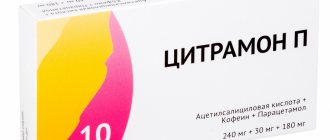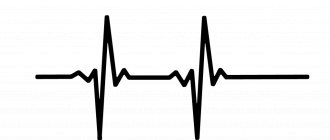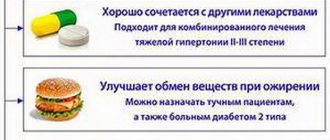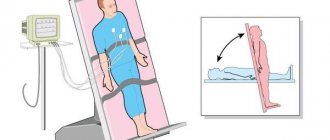In a healthy person, the pulse rate coincides with blood pressure readings. If the blood moves unhindered, if nothing bothers the person psychologically and he feels well physically, then the data will correspond to the norm. With high blood pressure, the heart rate will be accelerated, and with low blood pressure, the heart rate will slow down. But if a high pulse is noted at low pressure, this is very dangerous, and urgent measures must be taken.
- 6.1 Medicines
What does high pulse and low blood pressure mean?
Normally, blood pressure should be 120 over 80, and the heart rate should be 60-70 per minute. Indicators may differ slightly. Some people feel great with low blood pressure and a slow pulse, while some, on the contrary, feel great with high blood pressure. But this is an exception to the rule.
If, with low blood pressure, the heart rate exceeds 90-100 per minute, this indicates that serious poisoning, hemorrhage has occurred in the body, or there is some kind of cardiac pathology.
In parallel, headaches, dizziness, nausea and even loss of consciousness are noted. This may be caused by the following factors:
- varicose veins of internal organs;
- bleeding ulcers;
- hemophilia;
- cirrhosis;
- shock;
- dehydration;
- diarrhea or vomiting;
- decreased protein levels in the blood;
- emphysema;
- burns;
- physical and mental stress;
- sun or heatstroke;
- malfunction of the thyroid gland or kidneys;
- hidden diseases and infections;
- taking medications (antidepressants, pills for hypertension, diabetes).
But the reasons are not always so frightening. Often this condition can be caused by a sedentary lifestyle, overeating or eating new foods that are difficult to digest, bad habits, etc.
Note!
A high heart rate with low blood pressure can be caused by changes in weather, lack of sleep or extreme fatigue.
Causes
Tachycardia with hypotension can occur under the influence of various factors. The most common reasons include:
- significant blood loss,
- shock resulting from an allergic reaction, injury, toxins and infections,
- vegetative-vascular dystonia, which occurs with the development of specific crises,
- pregnancy - during pregnancy, vascular tone decreases in a woman’s body due to the influence of the hormone progesterone,
- dehydration resulting from prolonged vomiting and diarrhea, significant physical exertion, heat stroke,
- acute inflammatory processes in internal organs, leading to changes in blood distribution,
- heart damage with changes in myocardial contractility,
- taking certain medications,
- systemic consumption of alcoholic beverages,
- atherosclerosis, which causes blockage of blood vessels,
- diabetes,
- severe vitamin deficiency.
Before starting treatment for tachycardia with hypotension, it is necessary to accurately establish and eliminate its cause. In this case, therapy will bring the desired result much faster.
Causes of high heart rate and low blood pressure
Sometimes an accelerated pulse with low blood pressure is considered almost normal. Or rather, a completely explainable human condition. This applies primarily to pregnant women, adolescents and the elderly.
In pregnant women
Just a few days after conception, a woman may feel unwell. Most often this is tachycardia and hypotension, that is, an accelerated pulse with low blood pressure. This occurs due to serious changes in the body, which primarily affect the cardiovascular system. An increase in progesterone levels accelerates blood movement, but anemia develops at the same time. If a woman suffered from it before pregnancy, or if the body was tired and weakened, then the situation will worsen even more.
Important!
During pregnancy, the pulse is always slightly elevated, but the readings should not exceed 110 beats per minute.
Being in a wonderful position, the girl often feels dizzy, tinnitus, nausea, pale skin, and severe weakness. These are all signs of vegetative-vascular dystonia, during attacks of which the heartbeat may accelerate and blood pressure may decrease.
In the elderly
Similar conditions also affect older people. With age, the heartbeat becomes slower and in old age the indicators can be 60-65 beats per minute. If your lifestyle is stable and calm, this does not cause any problems at all. And with physical or mental overexertion, with stress, with sudden movements and even with a change in body posture, everything can change, and with low blood pressure, the pulse will sharply accelerate.
Note!
An increase in heart rate combined with hypotension is very dangerous for older people. This is fraught with oxygen starvation of the body, which causes sharp wear and tear of the brain and heart.
Most often, this malaise occurs when:
- taking medications to lower blood pressure;
- myocardial infections;
- weakness of the heart muscle;
- internal bleeding (even a burst capillary or microvessel is enough);
- changes in weather and atmospheric pressure;
- poisoning.
Elderly people who have had a heart attack or stroke should be especially careful.
In a teenager
At an age when the body experiences not only sexual development, but also rapid physical growth, tachycardia is a fairly common occurrence.
When a teenager is worried about a rapid heartbeat, and blood pressure measurements are below normal, but there are no other symptoms, there is no need to panic. It is enough to reduce physical activity, worry less and rest more. It won't hurt to take a course of strengthening vitamins.
If, at the same time, the child feels weak, dizzy, if he has noise in his ears, regularly bleeds from the nose, has a headache, pale skin, and especially if he loses consciousness, it is necessary to urgently take action and seek medical help.
Such symptoms may indicate a malfunction of the endocrine system and the development of cardiac pathologies.
Important!
If a teenager regularly feels unwell, parents should definitely talk to him. Very often, the cause of such problems is problems with peers or first love.
Clinical case
I would like to present an interesting incident that happened quite recently. A 36-year-old man approached me. For several months he was bothered by general weakness, dizziness, rapid heartbeat, pale skin, and slight shortness of breath. I took a clinical blood test on my own in a private laboratory. The results showed a decrease in the level of hemoglobin, red blood cells, and a high content of reticulocytes. On the advice of relatives, I began taking iron supplements. No particular therapeutic effect was observed, which forced me to consult a doctor. Of the concomitant diseases, the patient noted only osteochondrosis of the cervical spine. Denies the presence of hemorrhoidal disease and gastrointestinal pathologies. During the examination, an increase in heart rate to 115 per minute and a decrease in blood pressure to 100/60 mm Hg were revealed. When palpating the upper abdomen, I was able to detect pain.
I issued a referral for fibrogastroduodenoscopy. During the study, a weakly bleeding ulcer was discovered on the lesser curvature of the stomach, 0.5 cm in diameter. The bleeding was stopped by laser coagulation (cauterization). A urease breath test was performed to diagnose Helicobacter pylori infection. The result is positive. A diet (1st table according to Pevzner) and drug therapy were prescribed: drugs that suppress the production of hydrochloric acid (Omeprazole), antacids (Almagel), antibiotics (Amoxicillin and Clarithromycin). It is also recommended to continue taking iron supplements. After some time, the patient noted a significant improvement in his condition: dizziness and weakness disappeared, and the skin acquired a healthy shade. A repeat blood test showed normalization of hemoglobin and red blood cell levels.
Rapid pulse and hypotension
Short-term tachycardia and low blood pressure may be physiological. The most striking example is dizziness, darkening of the eyes, mild nausea when suddenly getting up from the sofa or bed after lying for a long time. Perhaps almost every person has encountered this phenomenon. It is called "orthostatic tachycardia, or hypotension." However, you should not be afraid of this, since it is absolutely normal and physiologically justified.
A short-term decrease in blood pressure and increased heart rate are caused by the redistribution of blood flow under gravity to the lower parts of the body at the moment of transition from a horizontal to a vertical position.
The most dangerous conditions in which hypotension and rapid pulse are observed are the so-called paroxysmal arrhythmias. These include supraventricular, ventricular tachyarrhythmias, atrial fibrillation and flutter. Without emergency help, these heart rhythm disturbances can end very badly. Therefore, a person with a rapid pulse, regardless of blood pressure, must have an electrocardiogram.
Other pathological causes of tachycardia at low pressure:
- anemia (anemia);
- bleeding. Chronic blood loss can occur in the presence of hemorrhoids, gastric or duodenal ulcers;
- dehydration, for example, in patients with diabetes, or with prolonged diarrhea;
- hormone deficiency - Addison's disease (adrenal insufficiency), hypothyroidism (low thyroid function);
- neurocirculatory (vegetative-vascular) dystonia;
- overdose of drugs for the treatment of hypertension, prostate adenoma or impotence (“Viagra”).
I am often asked about how to treat tachycardia with low blood pressure. I always emphasize that you first need to find out the cause of hypotension.
Tachycardia at normal pressure
It may also be that the blood pressure is normal and the pulse is high. This usually occurs due to increased cellular oxygen demand, a short-term release of hormones into the blood that stimulate heart contraction, or exposure to various toxins. The reasons may be as follows:
- exercise stress;
- emotional stress or neurotic disorder;
- any infectious diseases accompanied by an increase in body temperature;
- smoking;
- excessive consumption of coffee and energy drinks;
- heart defects (tachycardia is especially often observed with mitral valve prolapse);
- pregnancy - due to hormonal changes in the third trimester, an increase in heart rate may be observed with normal blood pressure readings.
Hypertension and heart palpitations
Tachycardia and high blood pressure are most common in people who have hypertension in combination with other cardiac pathologies (chronic heart failure, cardiomyopathies, myocarditis).
In my practice, I often see patients in whom an increase in heart rate and blood pressure may be a sign of various endocrinopathies, such as:
- diffuse toxic goiter (hyperfunction of the thyroid gland) - the patient becomes irritable, he loses weight, his temperature rises slightly, he is bothered by excessive sweating (perspiration, hyperhidrosis);
- Itsenko-Cushing's disease/syndrome (a formation in the adrenal glands or in the brain that produces a large amount of glucocorticoids) - obesity occurs, purple or purple stretch marks appear on the skin of the abdomen, thighs, the concentration of glucose in the blood increases, bone strength decreases;
- pheochromocytoma (a tumor of the adrenal glands that excessively produces adrenaline and norepinephrine) - there are paroxysmal significant increases in blood pressure and heart rate, often leading to stroke and heart attack.
It also happens that hypertension and tachycardia are the result of an overdose of medications - antidepressants, psychostimulants, adrenomimetics (vasoconstrictor nasal drops).
Symptoms and signs
Measuring your heart rate is not difficult at all. To do this, you just need to know where the pulse point and the clock are located. But to find out your blood pressure, you need a tonometer. Therefore, it is not always possible to determine the data. But if tachycardia is noted, you can assess the person’s condition visually. If the pressure rises, the skin turns red, sweat appears, shortness of breath, and a headache in the back of the head and on the sides.
The following symptoms are observed with hypotension:
- nausea;
- weakness and drowsiness;
- headache in the forehead;
- the skin turns pale and becomes almost colorless;
- attention disorder;
- breathing becomes difficult.
If there are at least a couple of such symptoms, we can talk about low blood pressure.
Signs of tachycardia
Symptoms of tachycardia can be determined independently:
- cardiopalmus;
- weakness;
- dizziness;
- nausea;
- lack of oxygen;
- darkness in the eyes;
- dyspnea;
- chest pain.
Symptoms of tachycardia may not appear so clearly, without fainting and heart pain. If an attack occurs only after exercise or as a result of shock, and the heart rhythm quickly recovers without taking medication for tachycardia, then this is a manifestation of physiological tachyarrhythmia that does not require treatment. If these symptoms appear without obvious reasons, you should consult a doctor.
Diagnostics
With regular attacks of tachycardia in combination with hypotension, you should seek help from a doctor. First, you should visit your family doctor or therapist, who will issue directions for tests and, based on them, determine which specialist to go to next. Most likely, this will be a cardiologist or endocrinologist, pulmonologist, or less often an oncologist. Don't be surprised at the many checks that will be carried out during the inspection. To determine the cause of the malaise, measurements of pulse and pressure must be carried out under different physical activity, at different breathing rates, under different weather conditions.
Tests may also need to be taken several times.
If you have tachycardia, what should you do?
Many people begin to panic during tachycardia and do not know what to do. At the first symptoms of tachycardia, try to calm down and unfasten your collar to ensure air flow. You can take medicine - tincture of valerian or motherwort helps with tachycardia. There are more effective medications, but they can only be taken as prescribed by a doctor.
In addition, during an attack of tachycardia, washing with ice water or a cold compress on the forehead will help. You should breathe as deeply as possible - this will lower your heart rate.
If attacks recur, you should consult a doctor.
First aid
With a high pulse and hypotension, you need to be able to provide timely assistance. The heartbeat must be slowed down and blood pressure increased.
If the attack is not stopped in time, the situation may worsen even further.
You definitely need to lie down, raise your legs just above head level, unfasten the buttons on your clothes, loosen the belt on your trousers or the belt on your dress, and unfasten your shoes. You should do everything to be able to breathe calmly and deeply. To do this, you need to open the windows and doors, ensure a flow of fresh air, and turn on the fan to heat it up.
Sweet tea helps a lot. You can even drink two cups at once. If this is not possible, you should slowly suck on a couple of pieces of refined sugar or simply put a spoonful of loose sugar (sand) in your mouth. A piece of dark chocolate will also help increase blood pressure, but this is only if there is no vomiting.
If you feel hungry during an attack, you are allowed to eat a sandwich with cheese, but without butter, so as not to provoke nausea. You need to chew your food slowly and bite a little at a time.
To slow down your pulse, you need to take deep breaths, holding your breath for a few seconds. Tension of the abdominal muscles and pressure with your thumbs on the upper eyelids directly under the eyebrows also help.
Important!
In case of a severe attack, you should not take medications. The maximum you are allowed to drink before the ambulance arrives is Citramon.
Treatment
Tachycardia in combination with hypotension is treated both with special drugs prescribed by the doctor and with the help of folk remedies. The second option is suitable if the symptoms are not too pronounced and if the attacks are rare. Traditional medicine helps, but more for prevention. But if the situation is serious, medical treatment cannot be avoided.
Medicines
Medicines are prescribed only by a doctor and only after a complete examination. Self-medication is very dangerous because it can only worsen the situation. If you take blood pressure-raising medications at your own discretion, your pulse will increase even more, and if you take antihypertensive pills, your blood pressure will drop even more.
Most often, for hypotension with increased heart rate, the following is prescribed:
- Anapril, Concor and other beta-blockers that have a pronounced antiarrhythmic effect;
- Celanide, Digoxin and other glycosides;
- For example, Cardio-Forte and other drops to stimulate the heart;
- Asparkam, Panangin and other tablets to prevent a lack of magnesium and potassium in the body;
- Corvalol, Nottu and other sedatives;
- tranquilizers such as Relanium.
Take note!
If dehydration occurs along with illness, it is recommended to drink Regidron, which will help restore balance in the body.
Folk remedies
The use of folk recipes helps to gently and effectively relieve ailments, as well as prevent the occurrence of similar symptoms in the future.
Rose hip decoction will help normalize your pulse. 2 tbsp. Add 400 ml of water to the fruit, bring to a boil, boil for 15 minutes, cool, strain. Take 100 ml three times a day. The drink has a pronounced antimicrobial and immunity-boosting effect.
A sedative drink that helps strengthen the heart muscle is prepared from motherwort. Pour a glass of boiling water over a spoon, cover and leave until it cools completely. Take 200 ml once a day before lunch.
A decoction of valerian has a similar effect. Pour a spoonful of crushed root into a glass of water, boil for an hour, then leave until completely cool. Take a dessert spoon three times a day.
Take note!
For traditional recipes to work, you must take them for at least 3 weeks.
Diagnosis of tachycardia
Electrocardiography
The ECG plays a leading role in the differential diagnosis of tachycardia and in helping to identify its causes. This method allows you to determine the type of pathology, as well as the rhythm and heart rate. If the severity of symptoms of cardiac tachycardia increases, it is advisable to conduct daily Holter ECG monitoring. This method is highly informative. It allows you to identify and analyze any heart rhythm disturbances within 24 hours. Holter monitoring helps detect ischemic changes during normal physical activity.
Echocardiography
It is a standard examination method to exclude heart pathology in case of any rhythm disturbances. Thanks to echocardiography, the doctor receives data on the size of the heart chambers, the thickness of the myocardial walls, and changes in the valve apparatus. This examination allows you to identify violations of local contractility.
Electrophysiological study
This is an invasive method of examining patients with cardiac pathology. Electrophysiological testing is used when appropriate before surgery to treat arrhythmia. Used to diagnose different types of tachycardia in a limited number of patients. This method boils down to determining the nature of the propagation of an electrical impulse throughout the myocardium, making it possible to determine the mechanisms of tachycardia or cardiac conduction disorders.
Additional examinations
Additional research methods are used to identify the causes of cardiac pathology. The specialist may prescribe a blood test (general and thyroid hormone tests) and electroencephalography. In rare cases, an MRI of the heart is performed, usually to detect congenital abnormalities.
The dangers of low blood pressure and high pulse
Hypotension in combination with tachycardia is very dangerous. This symptom not only causes weakness of the heart muscle, but also leads to constant shortness of breath, weakness, and decreased performance.
A malaise that many do not take seriously leads to:
- heart attacks and strokes;
- Alzheimer's disease;
- ischemia;
- dementia.
Often such health problems end in death.
The best prevention of high heart rate with low blood pressure is a healthy lifestyle, sufficient physical activity, regular contrast showers, and the presence of foods high in potassium and magnesium in the diet.
If problems cannot be avoided, do not postpone your visit to the doctor. A timely and correctly drawn up treatment regimen will help avoid disastrous consequences and restore health.
Causes of tachycardia
In addition to a stressful situation, strong emotional experiences and physical activity, a lack of oxygen in a stuffy room can provoke physiological tachyarrhythmia. Also, heart rhythms increase at body temperatures above 38 degrees. Signs of tachycardia appear with allergies, after strong coffee, tea or alcohol.
Pathological tachyarrhythmia develops against the background of various diseases:
- previous heart attack;
- vascular dystonia;
- cardiac ischemia;
- hyperthyroidism;
- myocarditis;
- low pressure;
- dehydration of the body.
Symptoms of tachycardia also occur in people who have undergone heart surgery or who have overdosed on cardiac glycosides during drug treatment.








